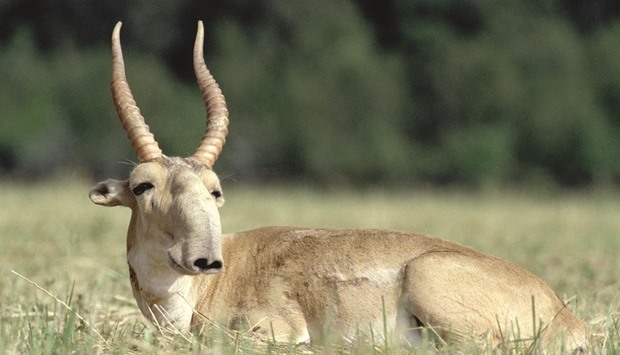A critically endangered species of antelope in Mongolia is facing the threat of extinction due to a virus that has wiped out 40 per cent of its population after being passed on from sheep and goats.
More than 3,880 saiga antelope have been found dead in the Great Lakes Depression of western Mongolia since late December.
Their deaths have been attributed to a virus called PPR, or Peste des Petits Ruminants, which was first discovered in Mongolian livestock in September and is believed to have spilled over to the saiga.
Workers regularly burn the antelope carcasses to prevent the spread of the disease.
Now wildlife experts are concerned the virus, combined with harsh winter conditions and scarce food, might spell doom for the species.
About 10,000 saiga antelope lived in Mongolia before the epidemic began, experts say. That number is down to about 60 per cent and counting.
“The saiga antelope is already under threat from poaching pressure and competition with livestock for access to pasture and nutritional resources,” Amanda Fine, a veterinarian and associate director with the Wildlife Conservation Society (WCS) in Asia, said.
“The additional impact of a disease like PPR, which could reduce the population by 90 per cent, is an extinction risk and this die-off must be addressed with that likelihood in mind.”
The virus causes pneumonia and alters the animals’ gastrointestinal tract. They die a few days after having shown signs of dehydration and weakness. Videos provided by the World Wildlife Fund Mongolia show antelopes struggling to breathe.
This is the first time both antelope and livestock in Mongolia have been exposed to PPR, so their immune system was not equipped to fight the virus, Fine said.
The antelope shared the pasture more closely with sheep and goats during winter, thus becoming infected.
The virus likely entered Mongolia from neighbouring China, as it’s related to a strain from a Chinese outbreak in 2013-2014, experts say. It is not transmissible to people.
Vaccination of Mongolian livestock against PPR has largely been “uncoordinated, sporadic and ineffective,” Bouna Diop, secretary of the PPR Global Eradication Programme, said.
The programme was set up by the Food and Agriculture Organization of the United Nations (FAO) and the World Organisation for Animal Health (OIE) last year, with the aim of eradicating PPR globally by 2030.
The cost estimate for its first five-year phase is 996 million dollars.
The implications of the PPR outbreak could extend well beyond the tawny-coated antelope to affect other wildlife and ultimately people’s livelihoods.
FAO and OIE experts who visited Mongolia recently found that the virus has spread to two other wildlife species, the ibex and the goitered gazelle.
Diop said PPR could spread further into central and eastern Mongolian regions, disrupting the ecosystem and posing socioeconomic and food security problems.
“This is a true international emergency, threatening the health of rural people through impacts on food security and livelihoods,” she said.
More than a third of Mongolians depend on livestock to live. The country exports large quantities of live animals, meat, milk and cashmere wool.
There’s already evidence of the PPR occurring in yak and domestic Bactrian camels.
FAO and OIE, with support from WCS, have established a crisis management centre and animal health rapid response team in Mongolia. The team collects samples from dead saiga, conducts necropsies and provides recommendations to local authorities.
However, donors have yet to fund the joint FAO/OIE livestock vaccination programme, said Richard Kock, a professor of emerging diseases at the Royal Veterinary College in London, who is part of the rapid response team.
“It is a great pity,” Kock said, “as the spread and expansion of the virus has been apparent since the beginning of the millennium, but it affects poor people, and they don’t have much influence.” –DPA

About 10,000 saiga antelope lived in Mongolia before the epidemic began, experts say. That number is down to about 60 per cent and counting.

